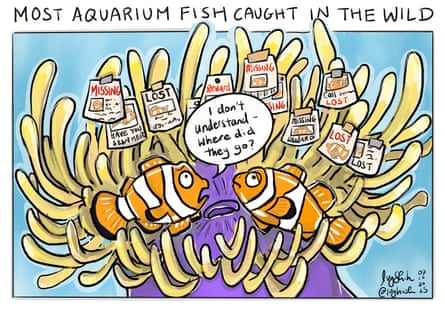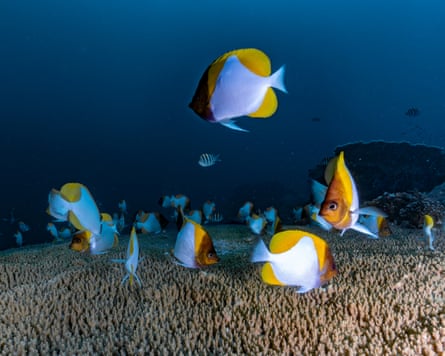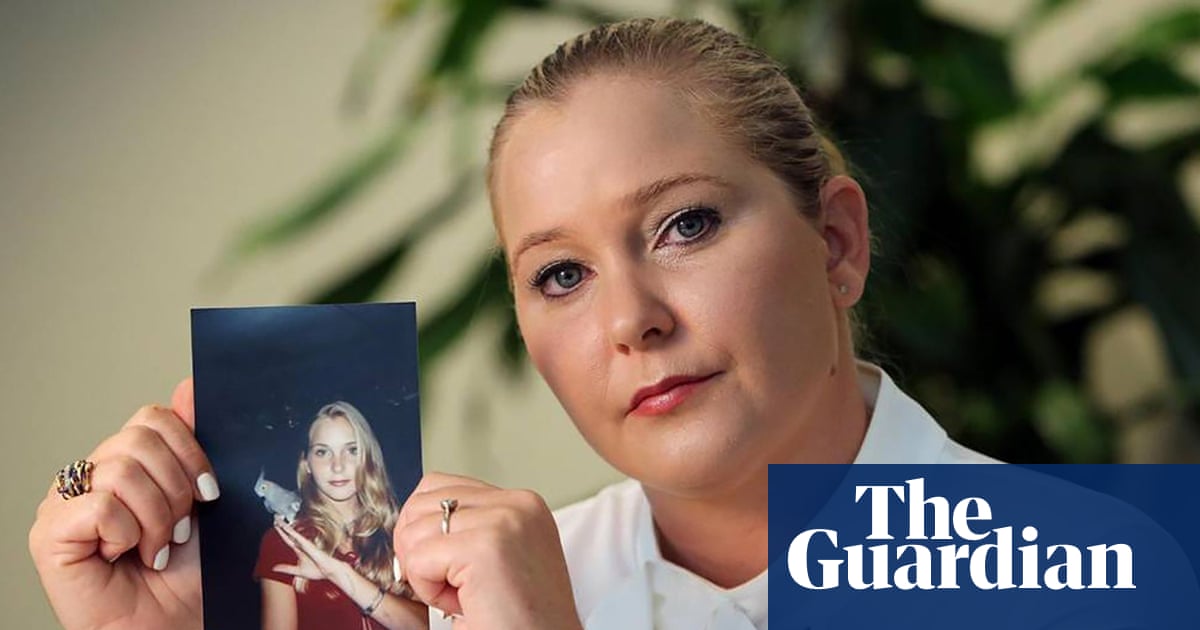The global trade in marine aquarium fish relies heavily on fish sourced directly from wild populations, with many consumers unaware of the practice due to murky supply chains.
New research has revealed the scale of the issue, finding most marine aquarium fish sold online in the US were wild-caught, mainly from the western Pacific and Indian oceans.
Sign up: AU Breaking News email
Globally, about 55 million marine animals are sold each year as part of the aquarium fish trade, an industry worth US$2.15bn. The US comprises two-thirds of global demand, while Australia consistently ranks among the top 20 importers and exporters.
Analysis of 734 marine fish species sold by major US aquarium e-retailers found approximately 90% were sourced solely from wild populations, 7% were both farmed and wild caught, and only 3% were exclusively sourced through aquaculture.
Consumers purchasing aquarium fish were often unaware of where they came from, according to University of Sydney marine ecologist Dr Bing Lin, who led the research published in Conservation Biology.
“A lot of the issue from this trade is how opaque and murky it is all along the supply chain – from reef to retail.”
Fish advertised for sale included 45 species listed by the International Union for the Conservation of Nature, as threatened or in decline. These included Banggai cardinalfish, clarion angelfish and azure damselfish.
International trade in endangered species is regulated under the Cites convention, an agreement designed to ensure that trade in wild animals and plants does not harm their survival.
“But many threatened species slip through global trade rules or aren’t even listed as traded in authoritative databases, and still end up on the market,” Lin said.
For species already imperilled in the wild, unsustainable or unnecessary trade could make things worse, he said.

Lin said many common aquarium species – including wrasses, clownfish and gobies – were usually collected from tropical reefs, and could be an important source of income for local communities. Greater support for well-managed wild fisheries could ensure that biodiversity was protected while retaining economic opportunities.
after newsletter promotion
Stronger traceability and oversight of the supply chain was also needed alongside increased consumer awareness, Lin said. “Credible eco-certification schemes would be helpful – a way to figure out where the fish in your tank came from and whether it was sustainably sourced, and to have an external body that can govern this and that can be relied upon to provide credible results.”
University of Wollongong marine biologist, Dr Marian Wong, who was not involved in the study, said there was often limited information available to hobbyists about the provenance of fish – how they were caught or bred and whether the methods used were sustainable and supported fish welfare.

“Obviously the ones that we see that end up in the aquarium shops are just a tiny fraction of what’s being caught, and survived what is a really arduous journey from [the] reef – in plastic bags – to different sorting facilities wherever they are in the world, to finally the pet shop that we buy them from.”
Wong, who studies the social lives of marine and freshwater fishes, said wild capture, if not carefully managed, had the potential to deplete wild populations, and could also disrupt group structures for social fish, like anemonefish.
“The more information we have, the more we can make informed decisions that align with our values, and the values of sustainable development.”

.png) 1 month ago
49
1 month ago
49

















































